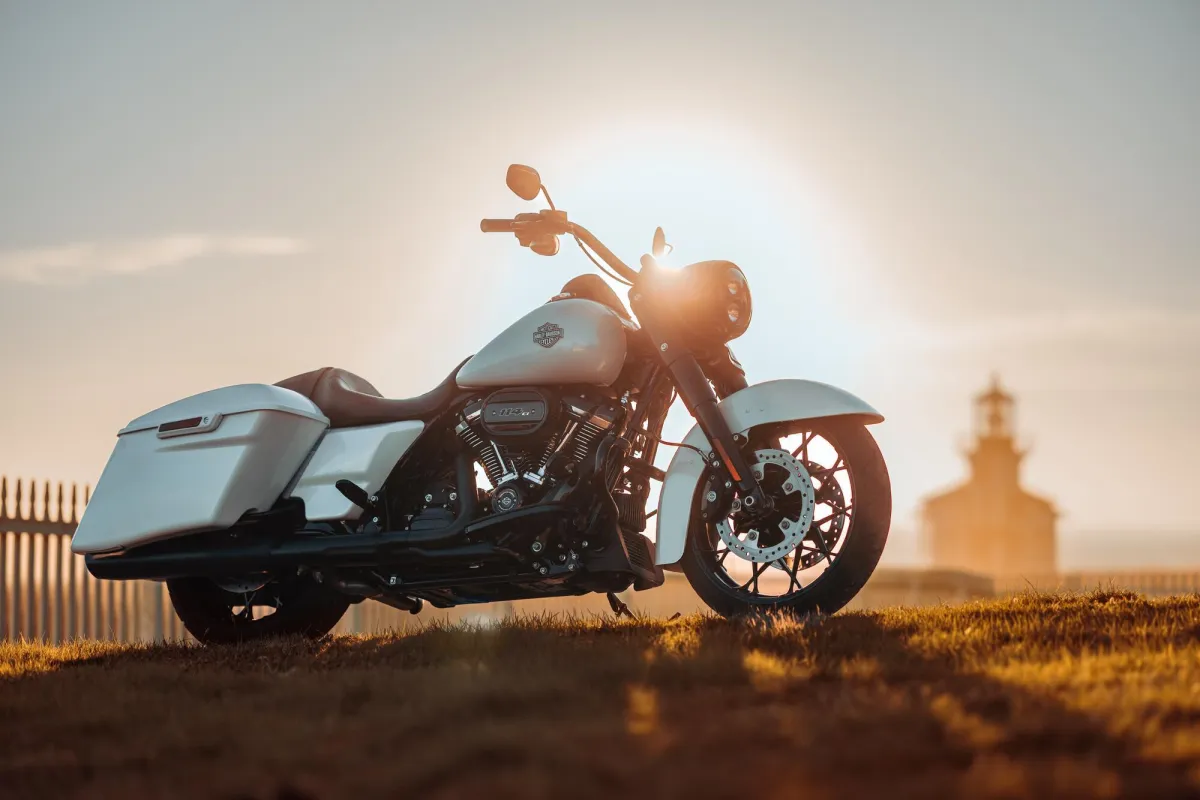Caliente Harley-Davidson Blog

Harley-Davidson’s Most Iconic TV and Movie Appearances
Harley-Davidson motorcycles have left an indelible mark on popular culture, starring in some of the most iconic TV shows and movies of all time. These appearances have solidified Harley-Davidson’s reputation as a symbol of freedom, rebellion, and adventure. Here are some of the most memorable moments:
1. Easy Rider (1969)
Bike: Harley-Davidson Hydra-Glide (customized as "Captain America" and "Billy's Bike").
Why It’s Iconic: This counterculture classic features Peter Fonda and Dennis Hopper riding across the American landscape on two of the most famous choppers ever built. The movie cemented Harley-Davidson as the bike of choice for free spirits and rebels.
2. Terminator 2: Judgment Day (1991)
Bike: Harley-Davidson Fat Boy.
Why It’s Iconic: Arnold Schwarzenegger’s T-800 rides a Harley Fat Boy in one of the most epic chase scenes in cinematic history. The bike’s rugged look perfectly matches the character’s tough persona.
3. Sons of Anarchy (2008–2014)
Bikes: A variety of Harley-Davidson models, including the Dyna Street Bob and Road Glide.
Why It’s Iconic: This hit TV series about an outlaw motorcycle club showcased Harley-Davidson motorcycles as essential to the biker lifestyle, reigniting interest in the brand among a new generation.
4. Captain America: The First Avenger (2011)
Bike: Harley-Davidson WLA (military bike).
Why It’s Iconic: Steve Rogers, aka Captain America, rides a classic WWII-era Harley in his fight against Hydra. The WLA is a tribute to Harley-Davidson’s contributions during the war, blending history with heroism.
5. Harley Davidson and the Marlboro Man (1991)
Bike: Harley-Davidson FXR.
Why It’s Iconic: Mickey Rourke’s character, Harley Davidson, rides this customized FXR in a futuristic, action-packed drama that’s as gritty as the bike itself.
6. Ghost Rider (2007)
Bike: Harley-Davidson Panhead (modified as the "Hell Cycle").
Why It’s Iconic: Nicolas Cage’s supernatural anti-hero transforms his Harley into a flaming skeletal chopper, making it one of the most memorable bikes in comic book adaptations.
7. The Wild One (1953)
Bike: Harley-Davidson Hydra-Glide.
Why It’s Iconic: Though Marlon Brando’s character famously rides a Triumph in this film, the rival gang is decked out in Harley-Davidsons, solidifying their association with biker rebellion.
8. Pulp Fiction (1994)
Bike: Harley-Davidson FXR Super Glide (nicknamed "Zed's chopper").
Why It’s Iconic: Bruce Willis’s character steals Zed’s Harley in one of the film’s most unforgettable scenes, leaving behind the memorable line, "Zed's dead, baby. Zed's dead."
9. The Walking Dead (2010–2022)
Bike: Harley-Davidson Dyna Super Glide Sport.
Why It’s Iconic: Norman Reedus’s character, Daryl Dixon, rides a rugged, survival-ready Harley, embodying the post-apocalyptic aesthetic while reinforcing Harley’s image as a reliable machine.
10. Electra Glide in Blue (1973)
Bike: Harley-Davidson Electra Glide.
Why It’s Iconic: This crime drama follows a motorcycle cop riding a Harley-Davidson Electra Glide, showcasing the brand’s association with law enforcement and road authority.
11. Renegade (1992–1997)
Bike: Harley-Davidson Softail Custom.
Why It’s Iconic: Lorenzo Lamas’s character rides this sleek Harley while living life on the run, making it a staple of 1990s TV biker culture.
12. Mad Max: Fury Road (2015)
Bike: Harley-Davidson-based custom motorcycles.
Why It’s Iconic: The post-apocalyptic wasteland is full of heavily modified Harleys, emphasizing their durability and adaptability even in extreme conditions.
13. Rocky III (1982)
Bike: Harley-Davidson FLH Electra Glide.
Why It’s Iconic: Sylvester Stallone’s Rocky Balboa rides this Harley to clear his mind, showing the bike as a means of reflection and escape.
14. Then Came Bronson (1969–1970)
Bike: Harley-Davidson Sportster XLH.
Why It’s Iconic: This TV series followed Michael Parks’s character as he traveled the country on a Harley Sportster, symbolizing the open road and personal freedom.
Harley-Davidson’s consistent presence in movies and TV has helped the brand transcend the motorcycle industry to become a symbol of adventure, rebellion, and individuality. These appearances not only showcase the bikes but also deepen their cultural significance.

Facebook
Instagram
TikTok
Youtube